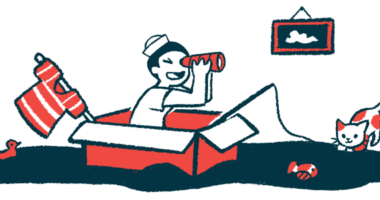Risk Factors ID’d That Predict Lung Infection, Lung Failure in Children
Risk of complications about 5 times higher in SMA type 1

Disease subtype, low body fat content, and shallow breathing and low blood oxygen levels during sleep are risk factors for recurrent lung infections and lung failure among children with spinal muscular atrophy (SMA), a study concluded.
The risk of these lung complications was about five times higher in children with SMA type 1 than with type 2 and 3, while a 1% decrease in blood oxygen saturation was linked to a 1.4-times higher risk.
That low body fat content was also a risk factor confirms that malnutrition in those with more severe disease plays a role in SMA-related lung complications, said the researchers who noted that risk factors should be assessed and used to predict lung infections and lung failure in children with SMA.
The study “Risk factors for recurrent respiratory tract infections and acute respiratory failure in children with spinal muscular atrophy” was published in Pediatric Pulmonology.
In addition to the hallmark symptoms of progressive muscle weakness that impairs motor development, breathing difficulties are common among children and adults with SMA. In more severe cases, children are more likely to have respiratory complications, including sleep-related breathing problems, recurrent lung infections, and respiratory failure.
However, risk factors and predictive signs of recurrent respiratory tract infections (RRTIs) and acute respiratory failure (ARF) in children with SMA remain to be clarified, leading researchers at the Capital Institute of Pediatrics, China to compare the clinical differences between SMA children with and without RRTIs and ARF.
Comparing clinical differences in children with SMA
They collected and examined the medical records of 109 SMA children, ages 0.2–15.8, of whom about half were boys. Among them, 23 were diagnosed with SMA type 1, 74 with type 2, and 12 had type 3. Thirty-one (28.4%) regularly used mechanical insufflation-exsufflation (MI-E), a noninvasive device that simulates cough to help clear airways.
At enrollment, all had completed a sleep study (polysomnography) to assess sleep-related breathing and no signs of lung infection were observed. Within the following year, RRTIs were recorded in 34 cases (31.2%), while ARF occurred in 20 patients (18.3%).
Participants were then divided into two groups: RRTIs/ARF-positive (39 cases) and RRTIs/ARF-negative (70 cases). In the RRTIs/ARF-positive group, the proportion of those with SMA type 1 was significantly higher and the body mass index (BMI), a measure of body fat content, was lower. No differences were seen in sex, age, or MI-E usage between the two groups.
Lung function among SMA children who were RRTIs/ARF-positive was significantly worse than those without RRTIs/ARF on most spirometry tests, which assess lung function by measuring how much air can be inhaled and the amount and speed of air exhaled.
Sleep study data showed that, in the RRTIs/ARF-positive group, the non-rapid eye movement (N2) stage, called quiescent sleep, was higher, and stage N3, considered deep sleep, was lower.
The number of average hourly waking arousals following an impaired breathing event was higher in RRTIs/ARF-positive patients, as was the apnea-hypopnea index (AHI), which is the number of apnea (breathing stoppage) or hypopnea (shallow breathing) events per hour of sleep. Blood oxygen levels during sleep were also significantly lower in this group.
During sleep, shallow breathing events were the main occurrence among children with SMA. The number of hypopnea events, their mean length, and the most prolonged events in the RRTIs/ARF-positive group were all significantly higher compared to RRTIs/ARF-negative children. There was no difference in the number of apnea events between groups.
Based on these data, the primary differences between the two groups were SMA type, BMI, apnea-hypopnea index, and the mean pulse oxygen saturation level (MSpO2), which is normally above 95%, statistical calculations found.
The risk of RRTIs and/or ARF was about five times higher in those with SMA type 1 than type 2 and 3, while a 1% decrease in MSpO2 was associated with a 1.4-times higher risk.
Models to predict RRTIs and/or ARF in the next year found that an MSpO2 level less than 95.5% saturation was the best predictive factor with a 76.1% accuracy. Sensitivity for this test alone, the ability to correctly identify patients at risk of RRTIs and/or ARF, was 53.9%, while the specificity, to rule it out, was 88.6%.
By combining multiple measures — an MSpO2 under 96% and more than 10 apnea-hypopnea events an hour, or a BMI decrease of more than 1 — the specificity increased to 95.7% and the accuracy to 79.8%. The test’s sensitivity remained constant with combined assessments.
“Type of SMA, BMI, AHI, and MSpO2 are independent risk factors and should be used to estimate the risk for RRTI or ARF in children with SMA,” the team said.








